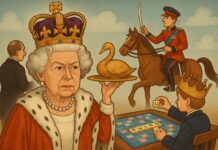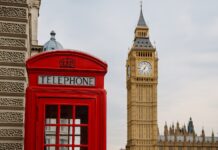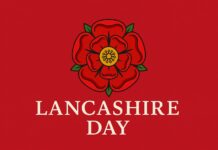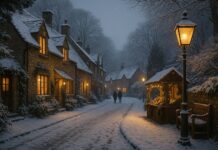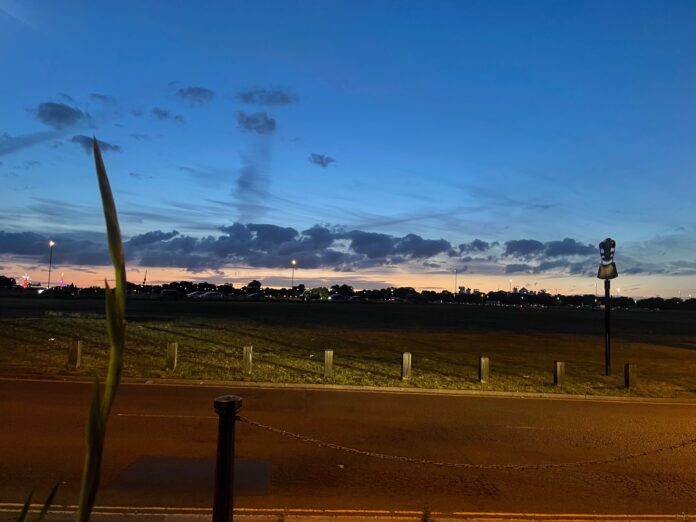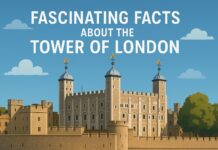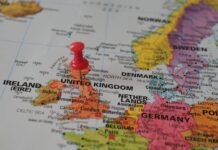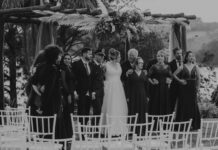Nestled in the heart of London, Blackheath is a neighbourhood that straddles the line between history and modernity. With its roots dating back to ancient times, Blackheath has witnessed centuries of change, from medieval gatherings to royal encampments during the Tudor era. Today, it is a thriving community that offers a unique blend of natural beauty and urban convenience.
The centrepiece of Blackheath is the heath itself, a vast expanse of greenery that has served as a stage for countless events over the years. Fairs, tournaments, and protests have all been held on the heath, symbolising the neighbourhood’s dynamic history.
The surrounding streets are lined with elegant Georgian and Victorian architecture, which provides a sense of continuity with Blackheath’s past. However, the neighbourhood is also home to a number of contemporary amenities, such as cafes, shops, and restaurants. This juxtaposition of old and new is one of the things that makes Blackheath such a special place.
As Blackheath continues to evolve, it remains a captivating destination where past and present converge harmoniously. Whether you’re interested in exploring its history or simply enjoying its natural beauty, Blackheath is a neighbourhood that has something to offer everyone. The interesting facts are as
51 interesting facts about Blackheath, London
- Blackheath is a district of southeast London located in the boroughs of Greenwich and Lewisham. It is named after the large open public grassland covering much of the area.
- It is one of the oldest parts of London, with evidence of human settlement dating back to the Stone Age, around 8,000 years ago. Flint tools and other artefacts have been found from this period.
- The name ‘Blackheath’ first appeared in 1166 and referred to the dark colour of the soil and the open ‘heath’ landscape.
- In the Middle Ages, Blackheath was part of a large royal hunting estate and was popular with monarchs like Henry VIII for this purpose.
- It was the gathering place for the Cornish Rebellion 1497 and Wat Tyler’s Peasants’ Revolt in 1381. The authorities quashed both rebellions.
- Blackheath was also the mustering point for English armies before key battles like the Battle of Agincourt in 1415.
- Notorious highwayman Dick Turpin is thought to have been born in a cottage on Blackheath in 1705.
- The first golf club in England was founded at Blackheath in 1608, initially playing a variant of the Scottish game.
- Blackheath hosted the world’s first hot air balloon flight in 1784 when Jean-Pierre Blanchard took off in a hydrogen balloon.
- Frankenstein author Mary Shelley and her husband Percy Bysshe Shelley lived on the edge of Blackheath in the 1810s.
- The Vanbrugh Pits on Blackheath are large gravel pits dug in the 17th and 18th centuries to provide material for local building work.
- In the 19th century, Blackheath was home to many wealthy City merchants who wanted space and fresh air outside central London.
- Michael Faraday conducted electricity experiments at his house on Blackheath Crescent in the 1820s.
- The Blackheath High-Level and Low-Level train stations opened in 1849 and served vacationers visiting the nearby resorts.
- Blackheath was the endpoint for the world’s first marathon in the 1908 London Olympics. The distance was fixed at 26 miles to match the length of this route.
- Blackheath has a famous rhododendron walk in the Rectory Field that explodes with colour in May and June each year.
- The annual Blackheath fireworks display on Guy Fawkes Night attracts over 80,000 spectators yearly.
- The Pagoda is a distinctive Chinese-style building constructed in Kew Gardens in 1762 and moved to Blackheath in 1952.
- Tranquil Hall Place is a moated Tudor manor house built in 1537, which now houses a museum and gardens.
- The Ranger’s House is a handsome Georgian villa dating from 1723, which contains fine art and stands in Greenwich Park.
- St Michael and All Angels church has an impressive neo-classical portico and contains relics salvaged from the Medieval Greenwich Palace.
- Blackheath has strong literary associations with Charles Dickens, Jonathan Swift, Geoffrey Chaucer and others.
- The Blackheath Society, founded in 1937, protects the unique character and heritage of Blackheath.
- Blackheath has been featured in TV shows like EastEnders and movies like Oliver Twist and Les Misérables.
- Local resident Douglas Adams wrote parts of The Hitchhiker’s Guide to the Galaxy while living in Blackheath.
- Blackheath Village and Westcombe Park are characterful shopping areas containing local independent businesses.
- The boroughs of Greenwich and Lewisham both have substantial portions of Blackheath within their boundaries.
- All Saints Church in Blackheath has memorials to polar explorer Robert Falcon Scott inside.
- The heath itself covers almost 300 acres and remains a popular open space.
- Cricket has been played on Blackheath since the late 18th century. Blackheath CC was founded in 1858.
- The Blackheath tea hut, established in the 1940s, serves refreshments from a cute converted mobile canteen.
- On New Year’s Day, masses gather on the heath to fly kites in an annual tradition.
- Established in 1861, Blackheath High School was one of the first schools dedicated to girls’ education.
- Blackheath has a bustling yearly fair in May and a monthly food festival with live music and events every September.
- The heath offers panoramic views north over the London skyline from its highest point at 119 feet.
- Jack Cade, leader of Cade’s Rebellion against Henry VI in 1450, gathered his forces on Blackheath before marching on London.
- Political meetings and rallies were common on Blackheath from the 18th to early 20th centuries due to its proximity to London.
- Artists like J.M.W Turner, Paul Sandby and Rowlandson all painted vivid images of Blackheath in the late 18th/early 19th century.
- The buildings of Blackheath High School include Mansion House, built in 1660 as a home for the royal park keepers.
- William Cator, an 18th-century timber merchant, developed parts of Blackheath as a residential area for high society.
- Montessori House is one of the oldest houses in Blackheath, built circa 1760 in the neo-Palladian style.
- The iconic tea clippers Cutty Sark and Blackwall were built in the shipyards of the old Blackwall Docks in the late 1860s.
- Wat Tyler met with rebel followers at a Blackheath alehouse called Green Man shortly before the Peasants’ Revolt.
- Blackheath was one of the first places subjected to aerial bombing in World War I when a German Zeppelin attacked in 1915.
- Blackheath has a bust stop named after Spanish Civil War leader Largo Caballero due to local efforts to support the Republicans.
- The annual Blackheath Joint Working Party helps preserve the unique nature of the heath and keep it accessible to the public.
- Roman remains like pottery and buildings have been discovered under parts of Blackheath, suggesting farming settlements existed.
- Blackheath is close to major attractions like Greenwich Park, the National Maritime Museum, the Queen’s House and the Royal Observatory.
- Areas of Blackheath have rich biodiversity and are a Site of Metropolitan Importance for Nature Conservation.
- Blackheath contains several historic pubs that date back to the 18th century, such as the Princess of Wales and the Hare & Billet.
- The famous rhododendron tunnel on Lover’s Lane in Greenwich Park starts next to the Blackheath boundary.
Blackheath has been the site of major historical events
- In 1381, Wat Tyler’s Peasants’ Revolt began here when 100,000 anti-poll tax rebels gathered before marching on London. The revolt was ultimately defeated, but it is considered a significant event in English history.
- In 1450, Jack Cade led 20,000 Kent and Essex yeomen to Blackheath in opposition to higher taxes being imposed by Henry VI. Cade was eventually caught and murdered by the King’s forces, but his rebellion is also remembered as a significant event.
- 1497 a Cornish rebellion was suppressed in the Battle of Blackheath Field. Over 2,000 of the slain are reputedly buried in and around Blackheath. This was the only battle fought on Blackheath.
- In addition to these historical events, Blackheath has been used as a marshalling area for British armies waiting to be shipped to fight abroad, particularly during the Napoleonic Wars. It has also been used for military training and parades.
Blackheath is a neighbourhood in London, United Kingdom, full of history and charm. From its ancient origins as a meeting place to its modern blend of old and new, Blackheath has something to offer everyone.
The heath is a vast expanse of greenery that has witnessed many events over the years. Fairs, tournaments, and even protests have all been held on the heath. Today, it is a peaceful haven where people can relax and enjoy the outdoors.
The surrounding streets are lined with elegant Georgian and Victorian architecture, which provides a sense of continuity with Blackheath’s past. However, the neighbourhood is also home to several contemporary amenities, such as cafes, shops, and restaurants. This juxtaposition of old and new is one of the things that makes Blackheath so special.
Today, Blackheath is a popular park and recreation area. It is home to a variety of sports facilities, including a cricket ground, a rugby union ground, and a golf course. Blackheath is also a popular spot for walking, running, and picnicking.
Haunting and Creepy Facts About Blackheath
- Blackheath is said to be one of the most haunted places in London. There have been many reports of ghost sightings and paranormal activity in the area, including:
- The ghost of a headless woman who is said to haunt the woods near Blackheath Park.
- The ghost of a highwayman who is said to haunt the road between Blackheath and Greenwich.
- The ghost of a young boy who is said to haunt the ruins of Blackheath Castle.
- In 1659, a group of Quakers were executed on Blackheath for refusing to pay the Church of England tithes. Their ghosts are said to haunt the area, and their cries can sometimes be heard on stormy nights.
- In 1780, a mob of anti-Catholic rioters attacked a group of Catholic immigrants on Blackheath. The rioters killed several people and burned down a number of houses. The ghosts of the victims are said to haunt the area, and their screams can sometimes be heard on dark nights.
- Blackheath is also said to be a hotspot for UFO sightings. In 1957, a group of witnesses reported seeing a UFO land in Blackheath Park. The object was described as being about the size of a car and having a bright light on top. The object took off into the sky and disappeared.
It is important to note that no scientific evidence supports the claims of hauntings or paranormal activity in Blackheath. However, the area’s dark history and reputation as a haunted place have made it a popular destination for ghost hunters and paranormal enthusiasts. Do you think some are useless facts?
In conclusion, exploring Blackheath is like unravelling a tapestry of history and charm. With each fact you learn, the story of Blackheath unfolds, reminding us of its significance in London’s narrative and its enduring appeal as a captivating destination. One of the best places to visit in the United Kingdom. Know more about this.
We hope you like reading Random facts, Weird facts, Fun facts, Trivia, Interesting facts, Bizarre facts, Little-known facts, Mind-blowing facts, Odd facts, Shocking facts, Unexpected facts about Blackheath






